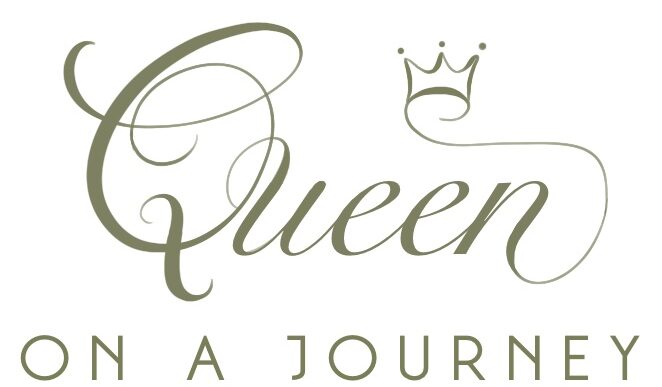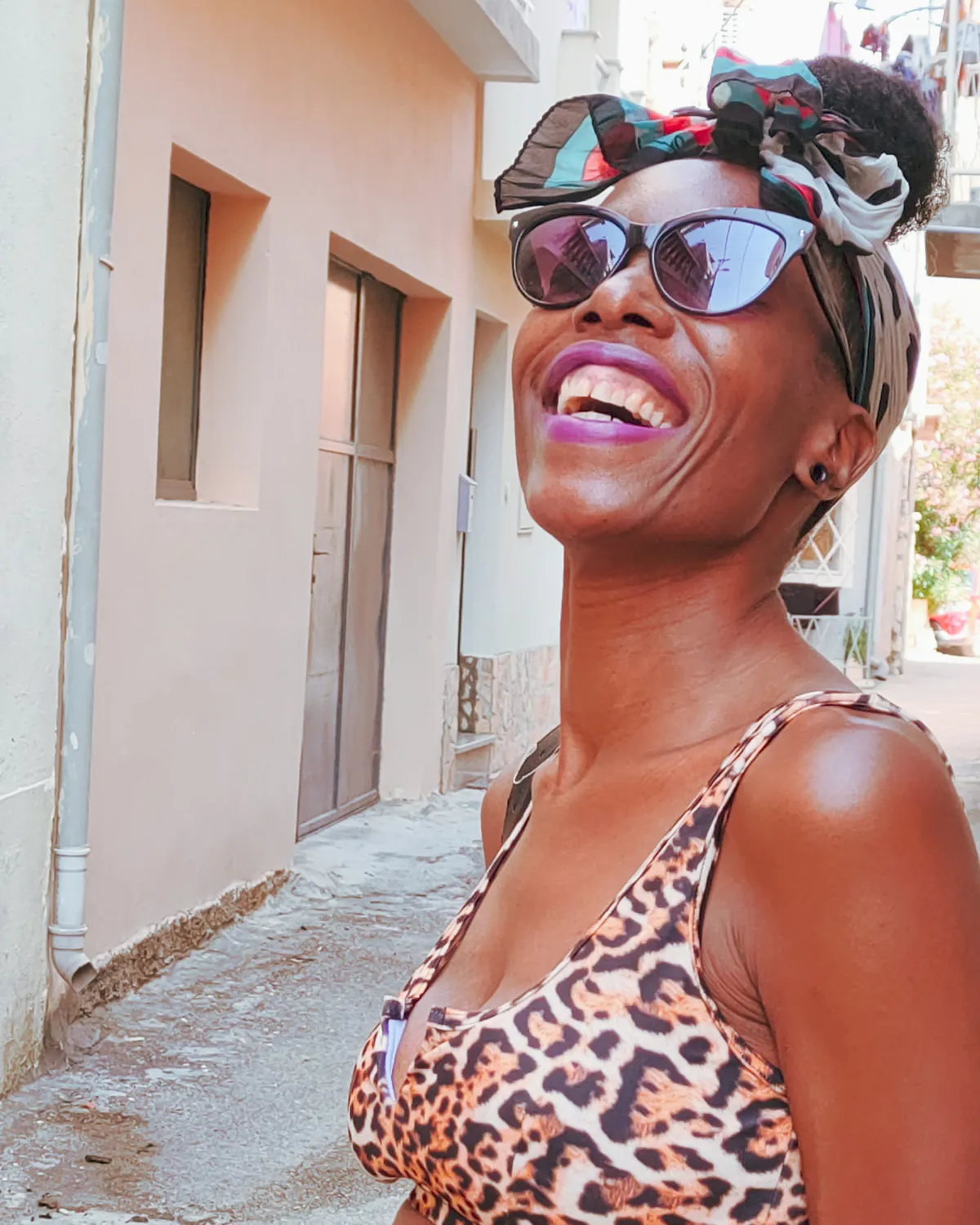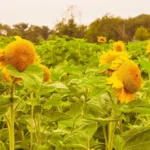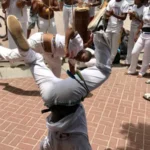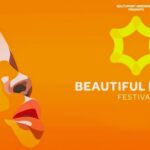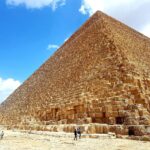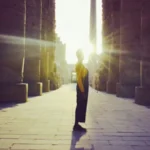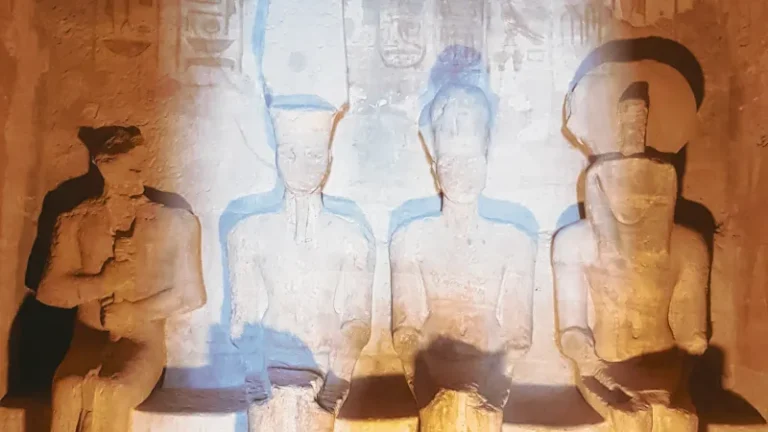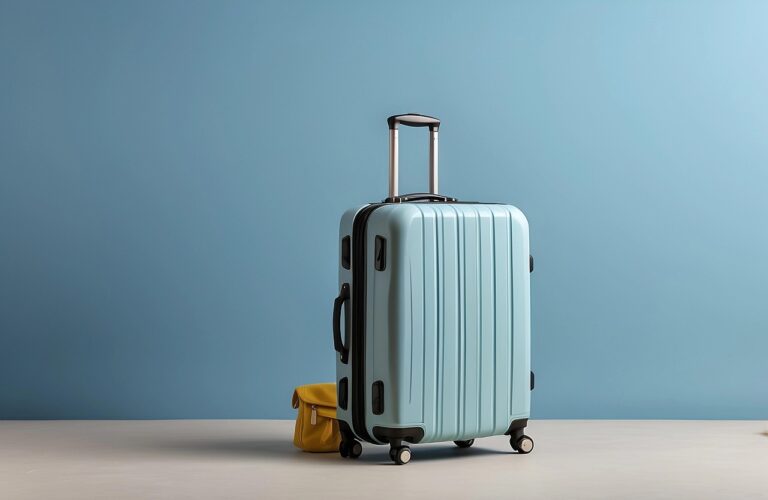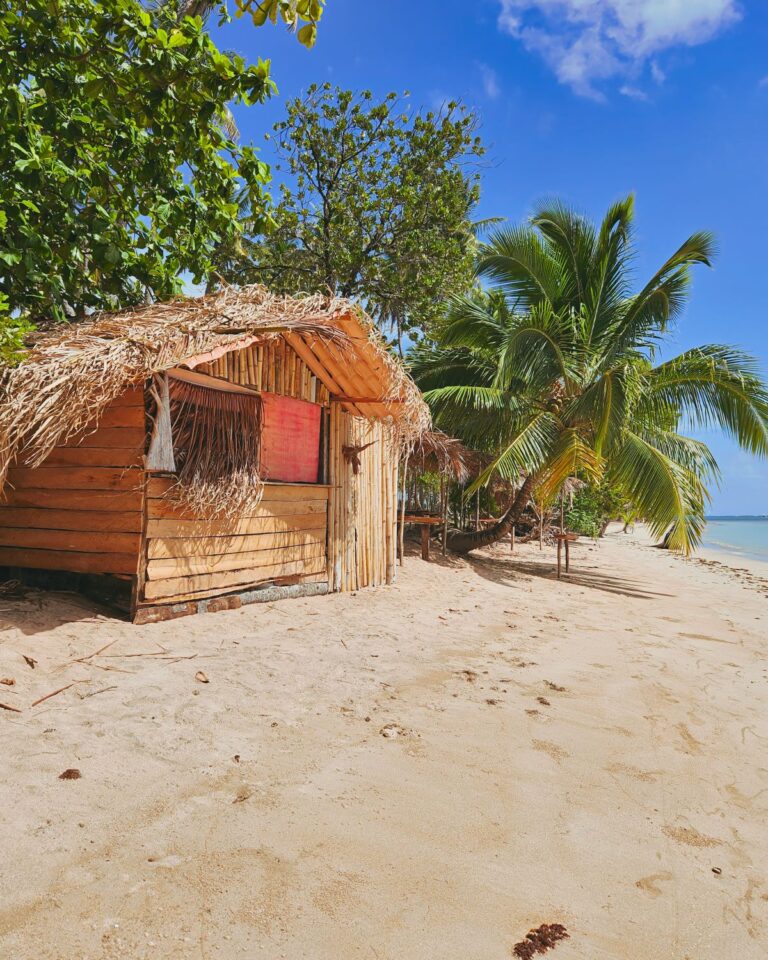Continuing with my travels to Africa, I decided on Senegal. I didn’t know much about it apart from the country being a former French colony in West Africa, and even after researching travel to Senegal by reading blogs, Lonely Planet, etc, I still wasn’t sure what to expect.
With such uncertainty and limited flight options from the UK, I thought a TUI package holiday was perhaps the best way to test the water, but it did have me wondering how much of an authentic African experience it would be. However, I knew it had to be more so than Sal, Cabo Verde.
TUI offered a limited option of hotels in Saly, so I opted for Hotel Neptune but also broke free and spent a couple of nights in the country’s capital, Dakar, and stayed at Union Amicale Corse Dakar, which I highly recommend.
If you’re thinking of a trip to Senegal, I’ll run through some things which you may find helpful.
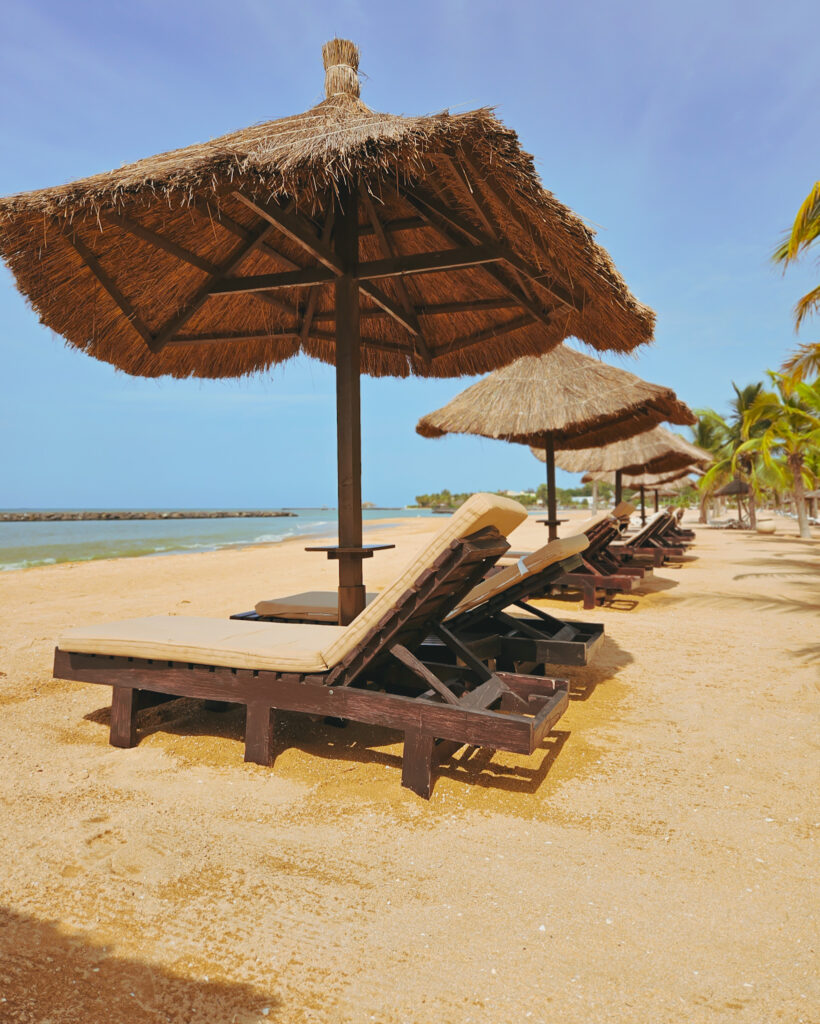
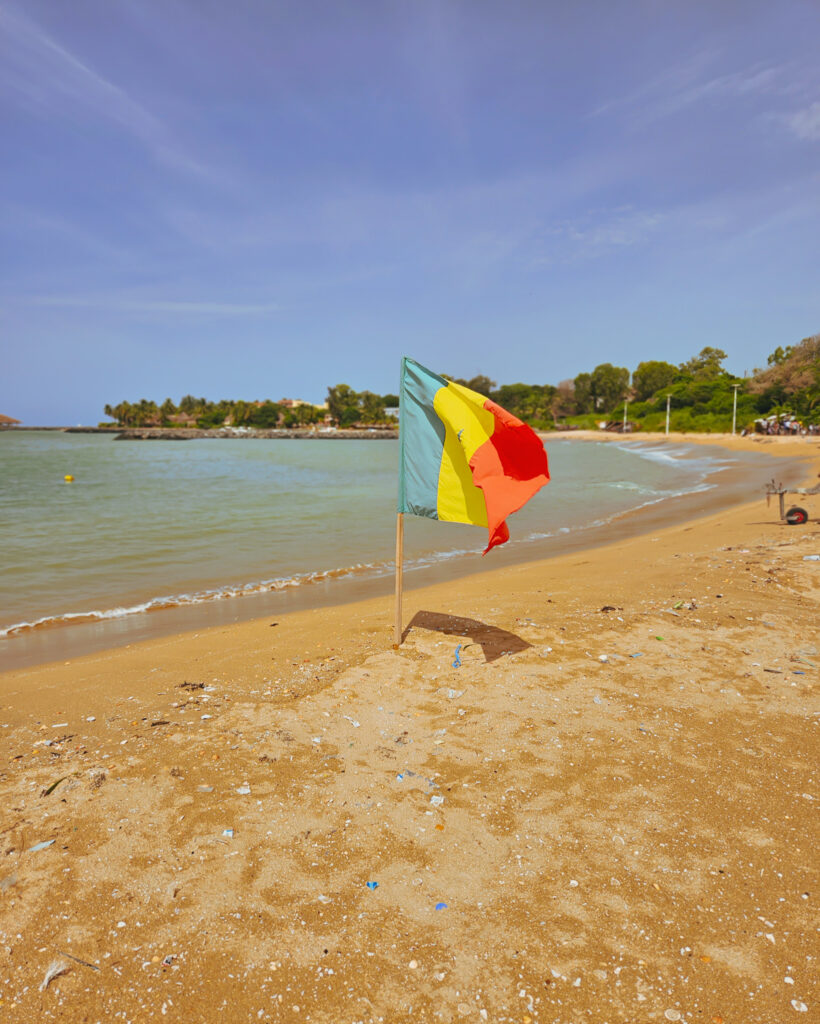
Currency
The official currency in Senegal is the West African CFA franc (XOF). It is only available in West Africa and best bought upon arrival. Therefore, the best currency to travel with is Euros to exchange at a bureau upon arrival and take a debit card for ATM withdrawals. ATMs are widespread, but withdrawal limits are quite low.
Exchanging currencies other than Euros and US Dollars can be problematic and rates unattractive. The Euro is accepted in tourist destinations such as Saly and some places in Dakar, but it is best and more convenient to have local currency to save any problems and for your money to stretch further.
CFA francs have a fixed exchange rate to the Euro: €1 = CFA 655.957.
Language
Although French is the official language of Senegal, it’s spoken only by about one-third of the population. Wolof is the first and most widely spoken and understood language, followed by French.
It would be helpful to have a basic grasp of the French language as you may struggle, which I did at times, but it’s not impossible to get by without it.
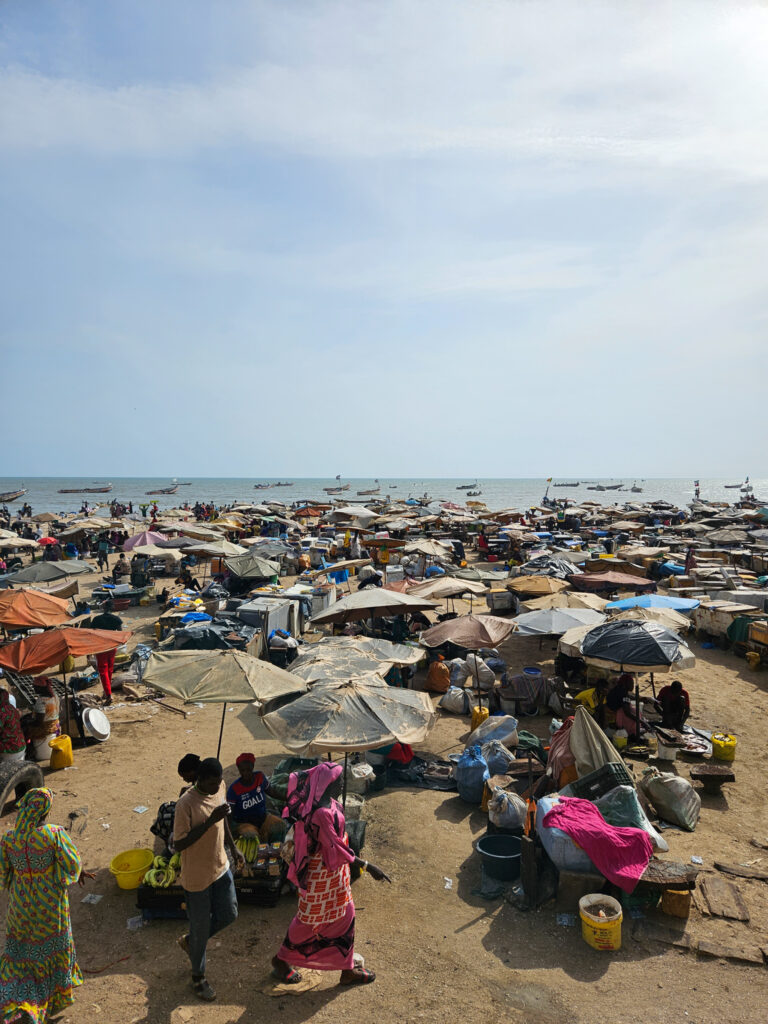
Religion
Around 90% of the population of Senegal are Muslim, 5% Christian, with the rest believing in animism, the first religion of African people.
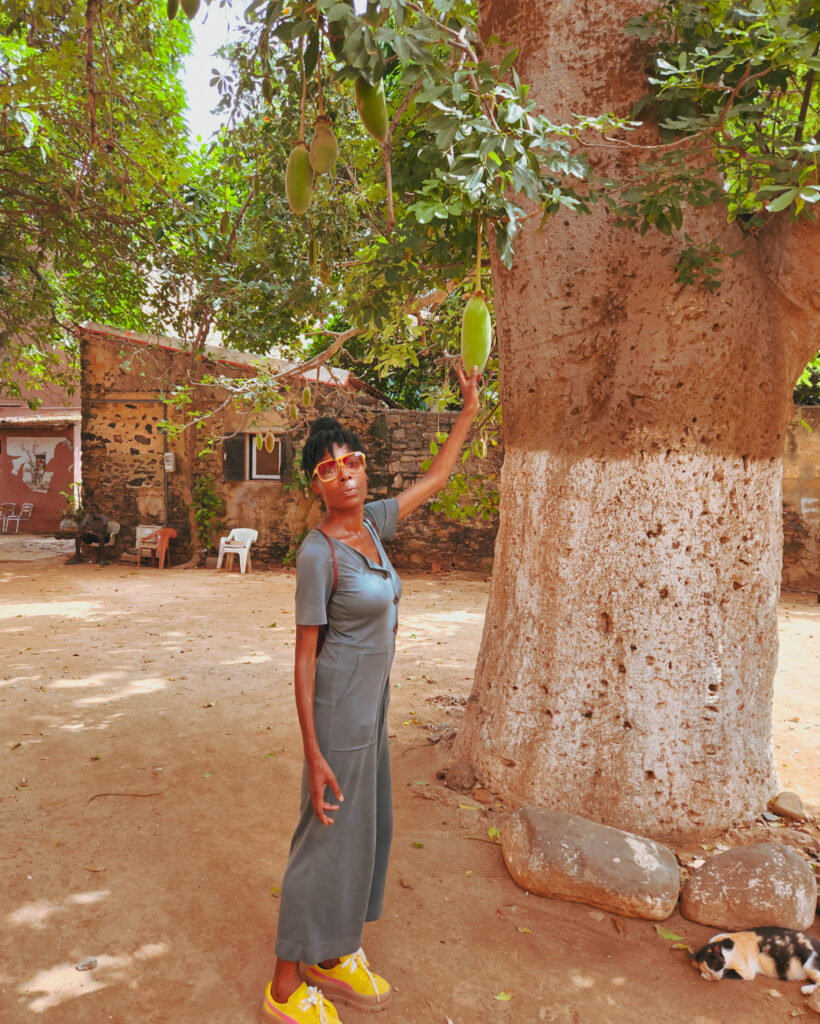
Dress
With the above in mind, it is advisable to dress modestly, although there is no strict dress code. It’s okay to wear shorts, but probably best not paired with a skimpy top to walk through town. However, swimwear is okay on public beaches.
Cameras
It’s illegal to photograph government buildings and official facilities and ask before photographing passers-by or working people. Sometimes people don’t want to be photographed while working because they prefer to be portrayed only in their best clothes.
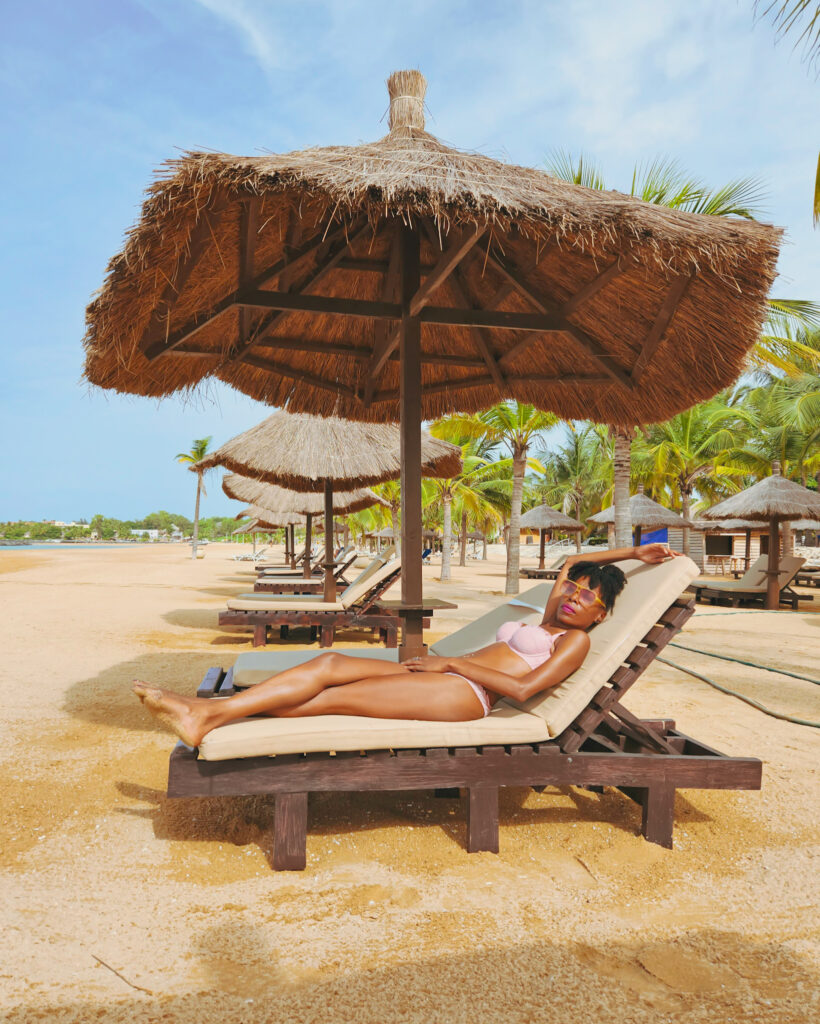
Saly
Saly sits along the Petite Côte coast in the west of Senegal, around a 1.5-hour drive south of the capital, Dakar.
Originally a Portuguese trading post and also known as Saly Portudal, the name Saly came about when Europeans were trading and had the word “sailing” on the boat, which locals mispronounced.
Saly’s economy relies almost entirely on tourism and is often cited as Senegal’s answer to the French Riviera and is a top tourist destination in West Africa.
Saly presents an ideal holiday destination for those looking for something different to your mainstream beach holiday destination. It’s a laidback African Riviera where art and craft stalls, jet ski rentals, sailing boats and fishing boats all neighbour each as do tourists and locals. Palm trees and sunbeds line the beach, costs are also reasonable, and four or five-five-star extravagance comes at a two-star price.
I did find that some tours from Saly were more expensive as it is further out, with some companies only accepting bookings for a minimum of two. There are tour options through Get Your Guide and Viator or can be arranged through your hotel.
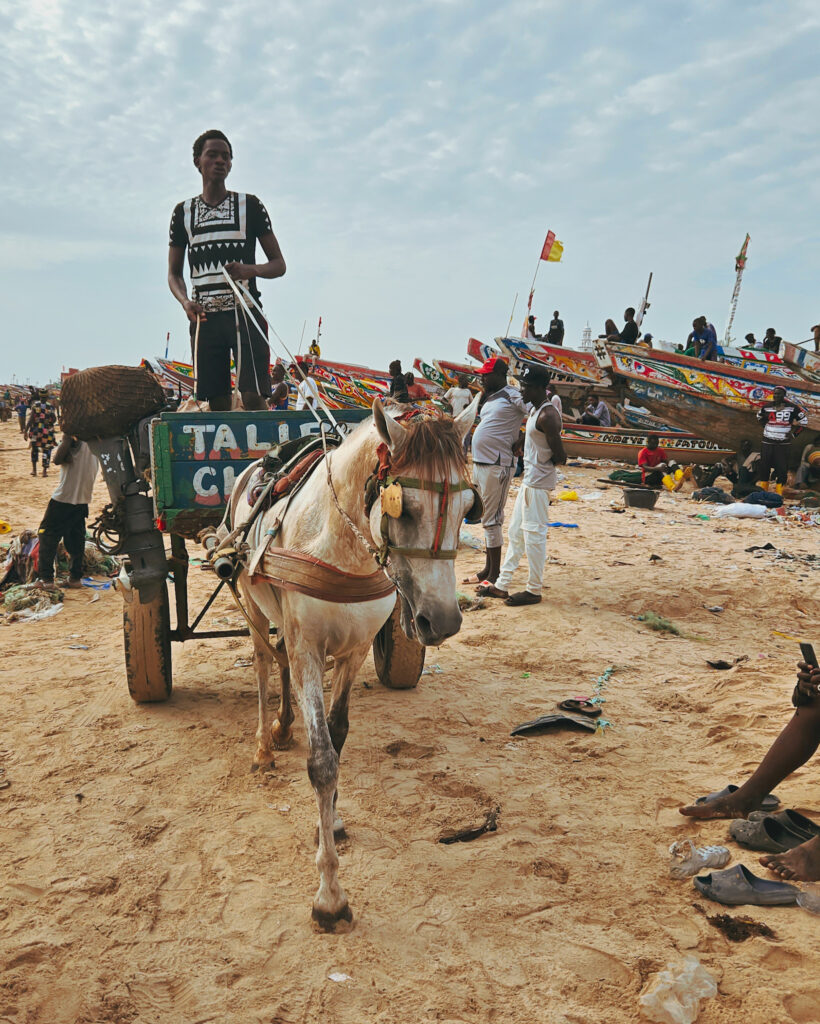
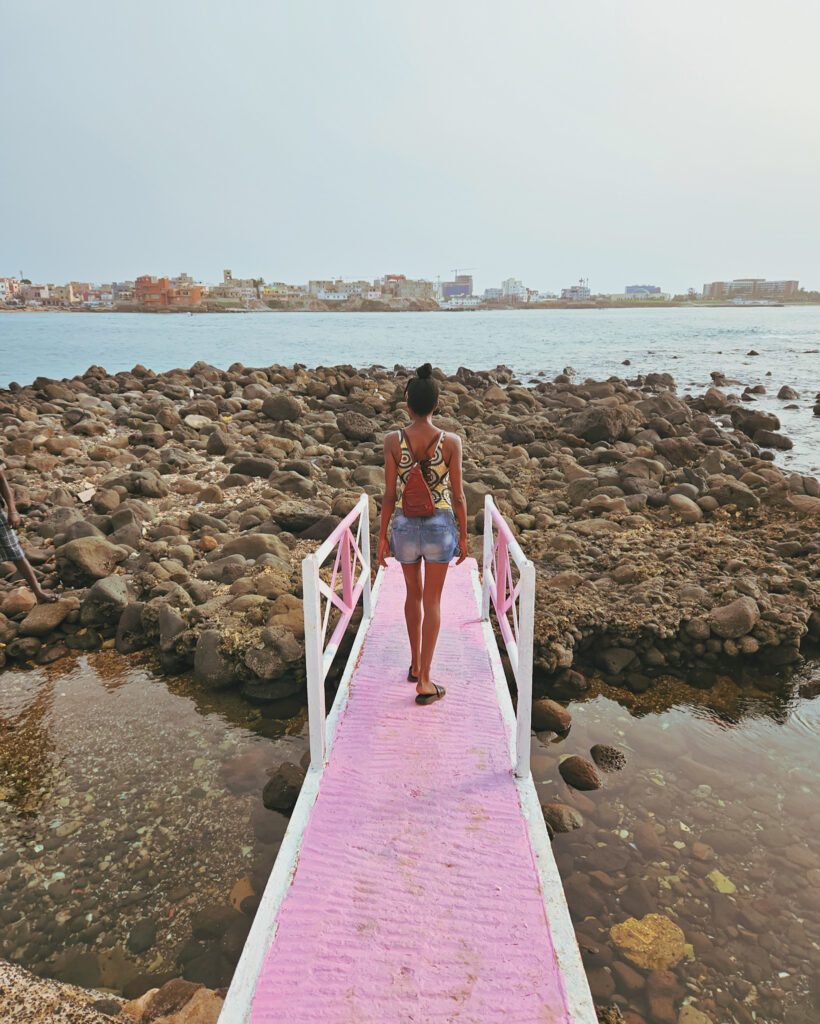
Touristy?
Though probably one of the most “touristy” areas in Senegal, Saly still represents African culture but with French influences while centred around manicured sandy beaches. It houses a variety of hotels ranging from all-inclusive beachfront package deals to those more intimate, a handful of bars, restaurants and shops, along with interesting local excursions and activities.
The area is not built up and adopts a low-rise architectural style with few buildings standing more than two storeys high. For one of the country’s most tourist-trodden areas, Saly still maintains a distinctly African feel, with traditional hand-painted fishing boats dotting the ocean and craft and clothing stalls lining the main streets.
Also, the beaches aren’t too crowded, and it was pretty much empty when I was there. The general feel is rustic and inclusive, with tourists and locals on the beach.
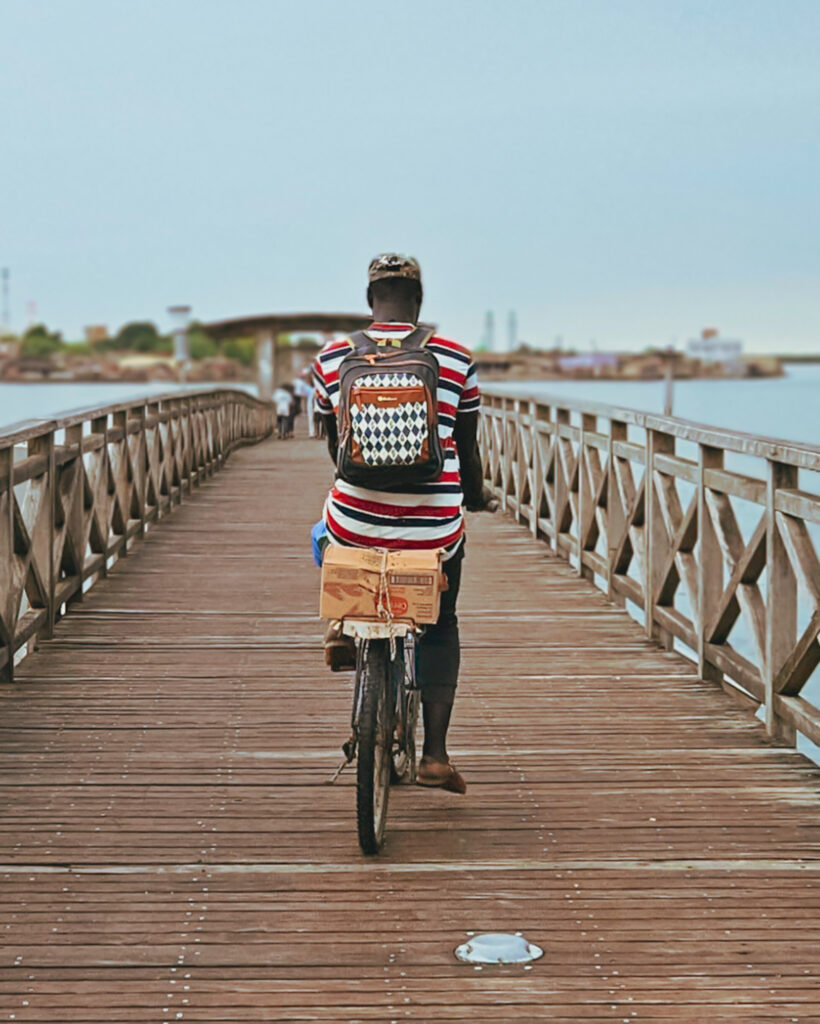
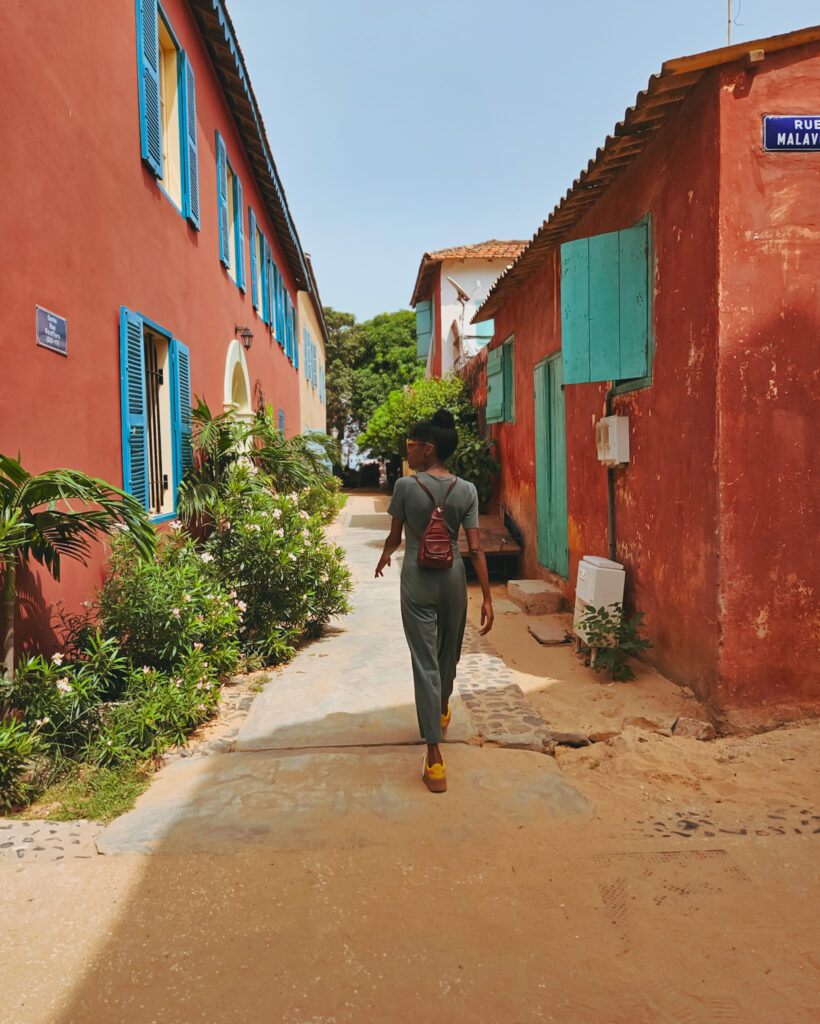
Getting around
Taxi is the most convenient way to get around, and Dakar has them aplenty. Do make sure to negotiate the price before departure. It’s easy to hail taxis on the road, and prices are reasonable. However, I had a couple of incidents in Dakar.
Each time the destination was confirmed and the price agreed, the driver got lost. He then turned to me to ask me questions, but communication was difficult as the drivers didn’t seem to understand much French when I used Google Translate. He still tried to hold conversation with me regardless, but journeys that should have been 15 minutes turned into an hour each time.
There was one incident where I just gave up and got out of the taxi. The driver seemed to be relieved.
Drivers were always polite, though it was just a frustrating situation. In any event, they never charged any more than the negotiated.
I got around Saly by foot and formed a friendship with a local taxi, Moustapha, who picked me up from Dakar and took me on tours.
A taxi from Dakar to Saly should cost 3000 – 4000CAF.
Things to do in Senegal
I was only in Senegal for a week and there are a lot more things to do in Senegal. However, I managed to fit quite a bit in without it feeling rushed.
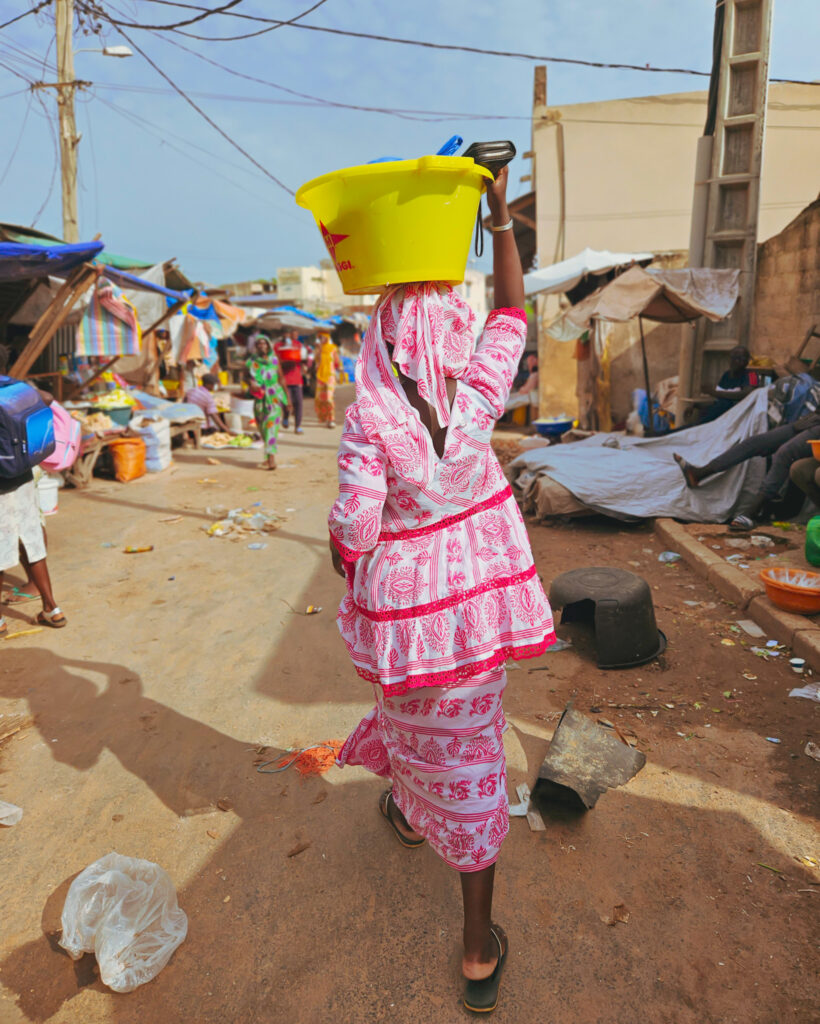

1. Mbour Fish Market
Fishy business is big in Senegal, especially in Mbour, at its vibrant and authentic fish market.
Mbour is the second biggest fishing port in Senegal (the first being Dakar). Every day here, fishermen will return in eye-catching, colourful, hand-made pirogues (traditional fishing boats) and unload their catch to sell at the lively market on the beach.
There is an endless variety of fish, and it’s a great way to get a feel for everyday life in the area. It’s best to visit late afternoon/early evening when you can catch most of the action. There’s also an indoor market where you can buy clothes, spices and more.
Taking a pirogue is the best way to approach the market. I took one from Saly and felt like a fisherman returning from sea, only the trip was about 15 minutes instead of three days.
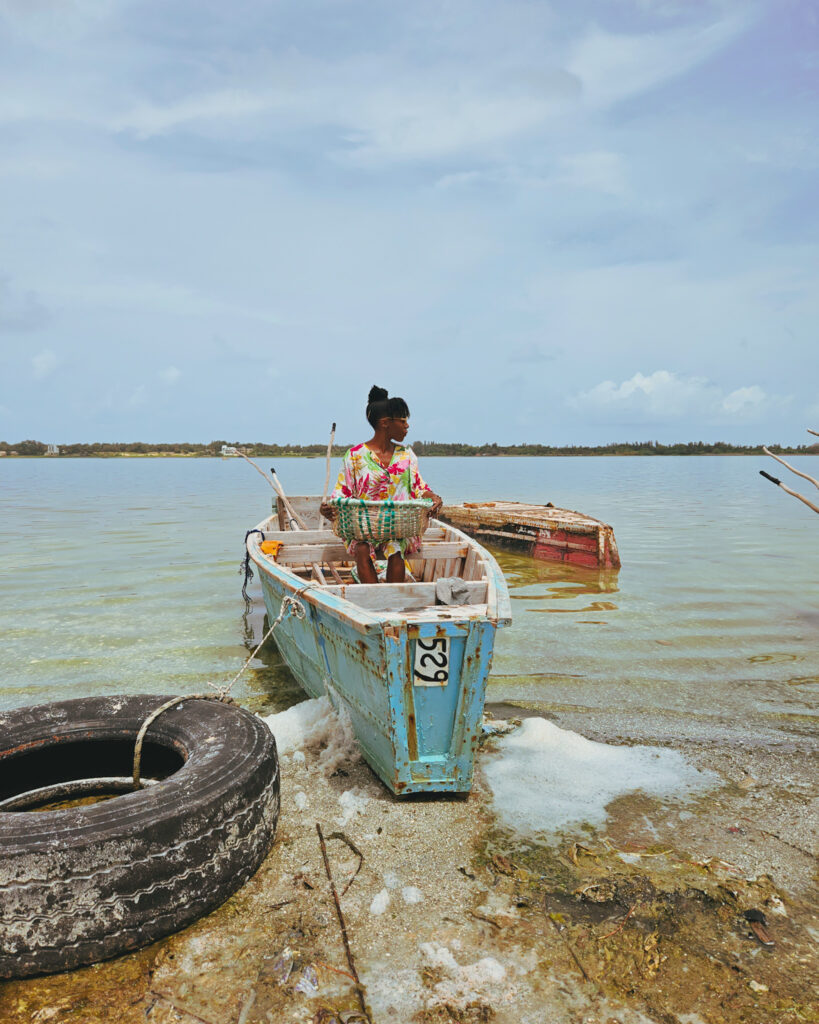
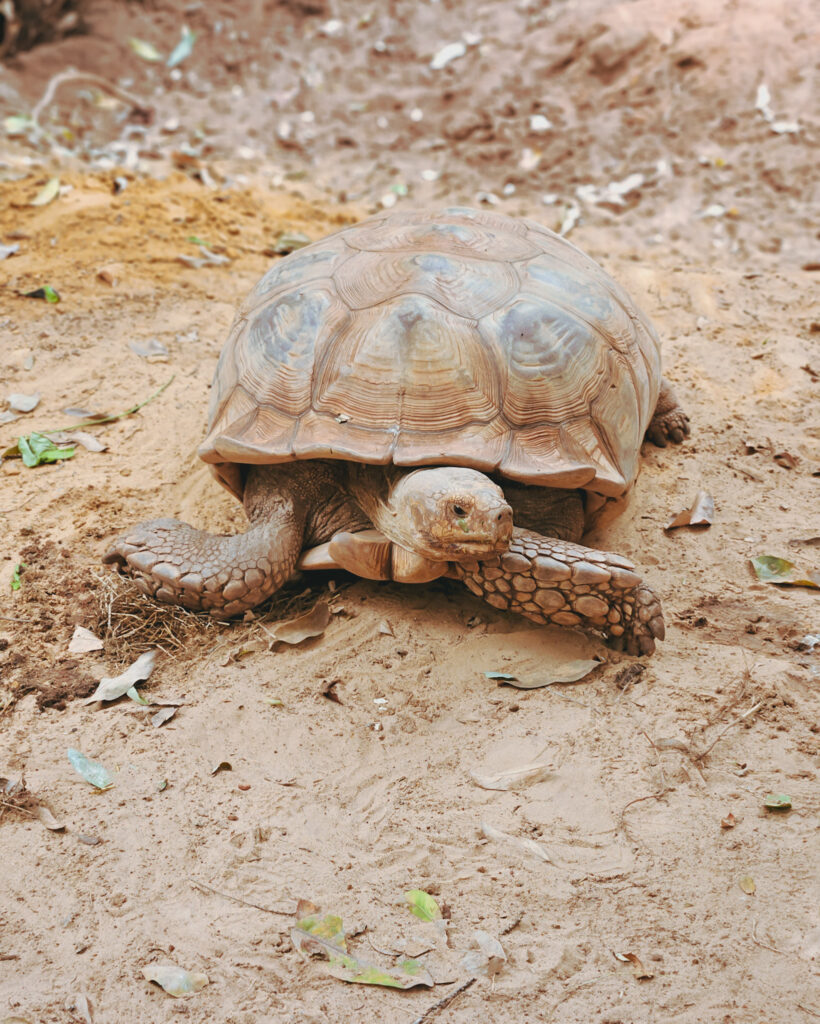
2. Pink Lake
Besides visual delight, Pink Lake is known for its high salt concentration, exceeding 40% in some areas. Locals make a living by harvesting the salt from the bottom of the lake. They apply shea butter to their bodies before they go in, as this helps to avoid tissue damage.
Pink Lake’s high salinity and rare microbiome produced an algae that turned it a pinkish colour, making the lake one of Senegal’s most visited attractions. However, due to recent innovation, there is no longer any bacteria in the lake to make it pink.
Although I knew the lake was no longer pink, I had seen the visuals on the Gram and was still intrigued and perhaps hoped to see even the slightest tinge of a pink hue.
To be honest, it was underwhelming, and there is no doubt that Pink Lake’s loss of colour equates to a loss of charm, which has unfortunately hurt tourism. The history, however is interesting, and there are things to do in the area, such as quad biking in the dunes or riding a 4×4 along the seafront of a lovely beach.
If you do visit, pay a visit to the nearby preservation camp for endangered tortoises (le village des tortues).
3. Walk with Lions at Fathala Wildlife Reserve
The lion is the national animal of Senegal, and walking with them was a highlight of my trip.
It is far, though. It was a nine-hour round trip from Saly to Fathala Wildlife Reserve, which is only 5km from the border of The Gambia (I even got a Welcome to The Gambia message from my mobile provider).
We only spent 30 minutes with the lions (Chris and CeCe), with our individual time walking with them just under a minute.
But was it worth it? 100%. It was an amazing and empowering experience with such majestic creatures.
I booked through Viator.
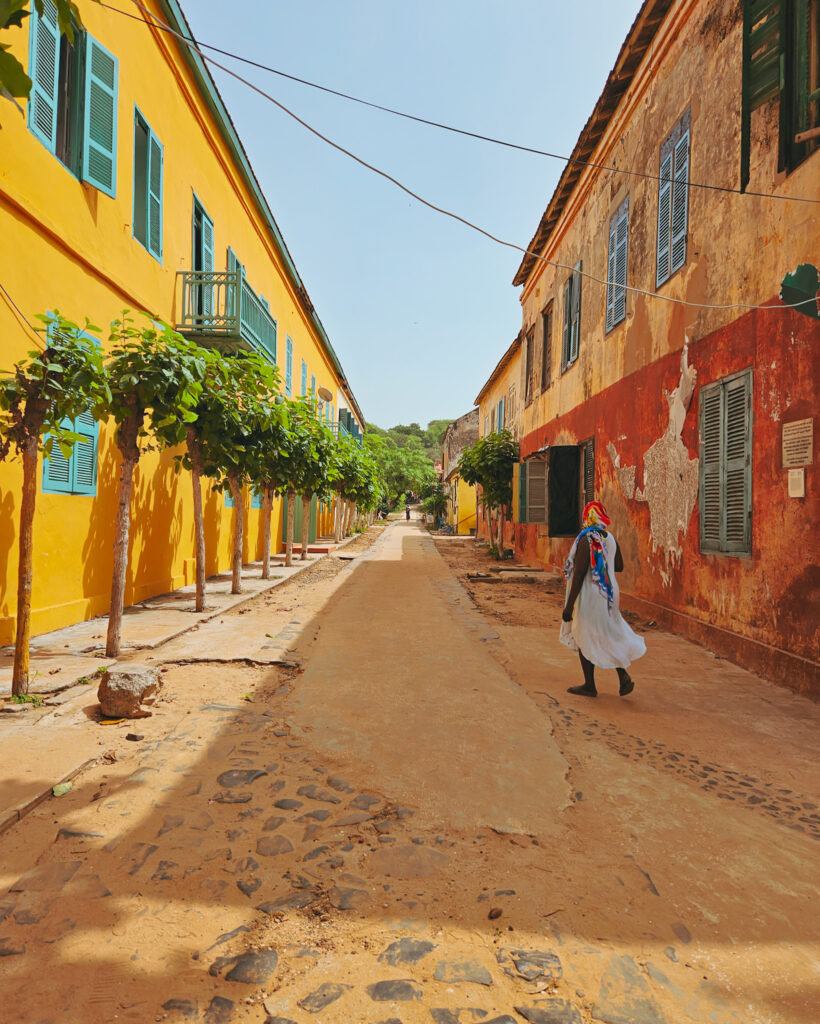
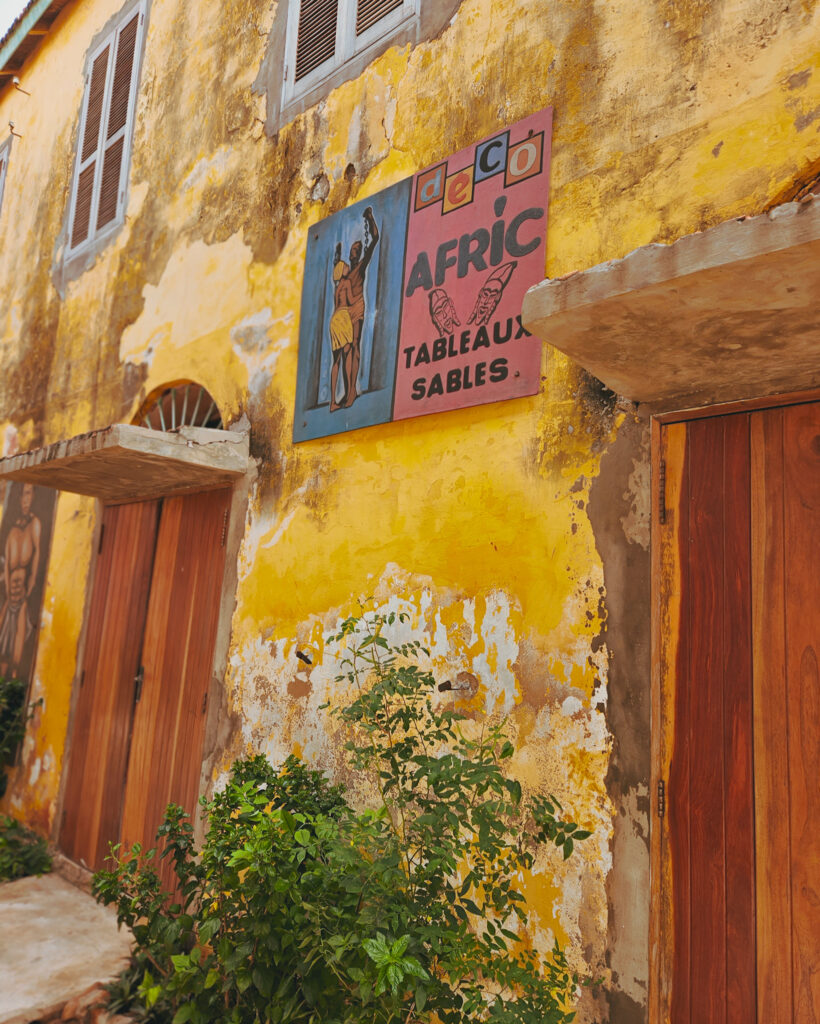
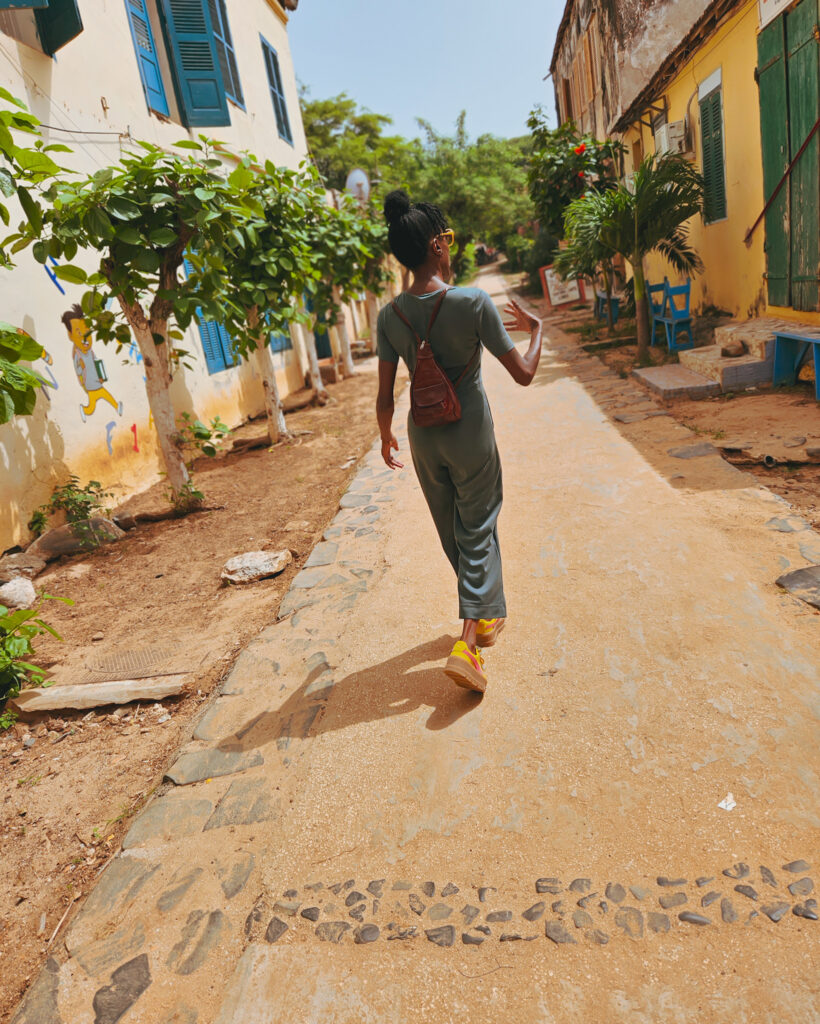
4. Gorée Island
This is a must of things to do in Senegal. Gorée Island lies off the coast of Senegal, opposite Dakar. Though the island is beautiful and colourful, its past isn’t pretty.
The Island was an important hub in the transatlantic slave trade, and you can visit the “House of Slaves” museum and memorial on the island where enslaved Africans were kept captive before going through the “Door of No Return” that opens facing the Atlantic Ocean.
The first Europeans here were the Portuguese in 1444, and they named the island Palmor because of the palm trees around the island. Next were the Dutch, which is where the name Gorée comes from.
5. House of Slaves
Slavery started on the island in 1536 when the first slave house was built. The one that stands now is the last one of 28 slave houses that were on the Island and was built by the Dutch in 1776.
The whole family would have been in this kind of slave house. Men, women and children, as the Europeans needed people to work the natural resources in the Americas, and copied the module the Arabs started in the 7th century but to a greater and more horrific degree.
In this kind of slave house, there would be 150 – 200 slaves for 3 – 3.5 months before being deported to the Americas, losing their identity and African roots. There would often be 15 – 20 enslaved Africans per tiny cell downstairs with chains on their hands and feet.
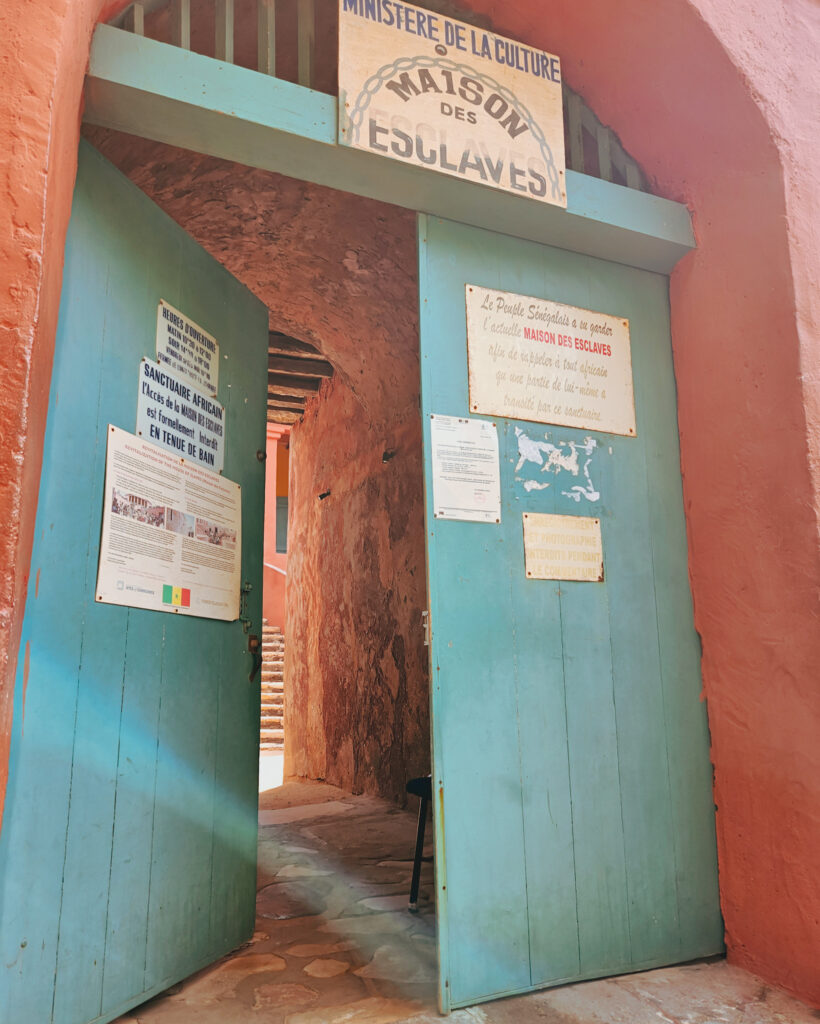
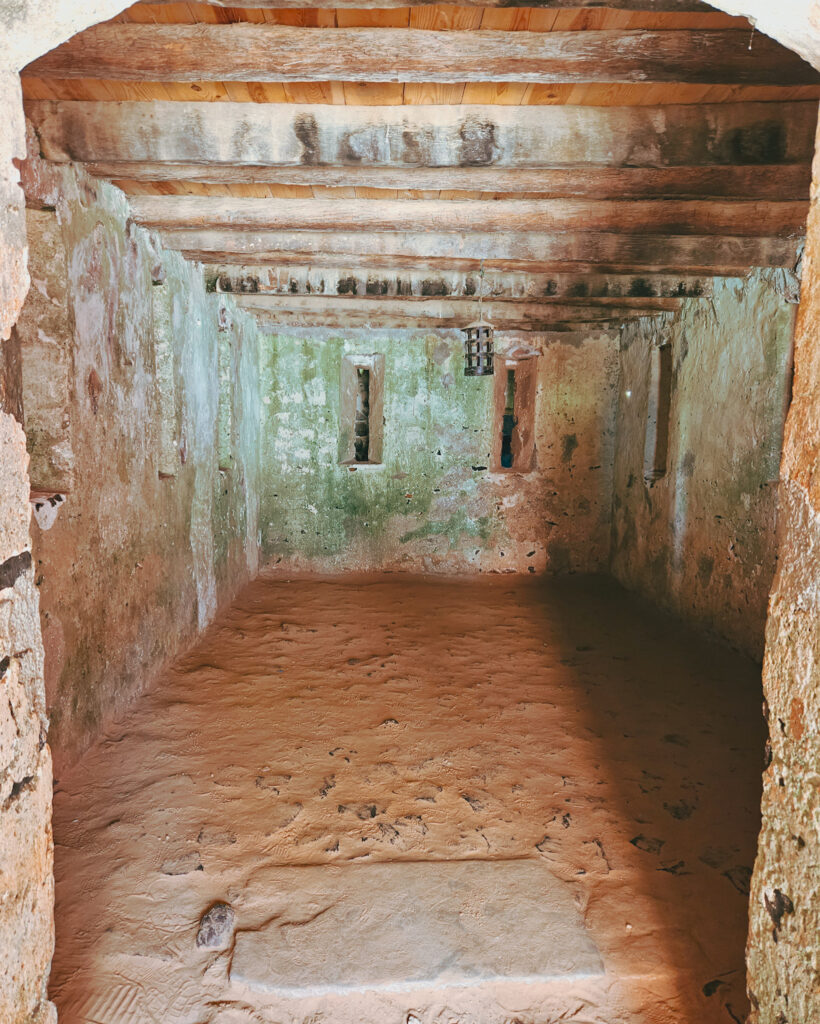
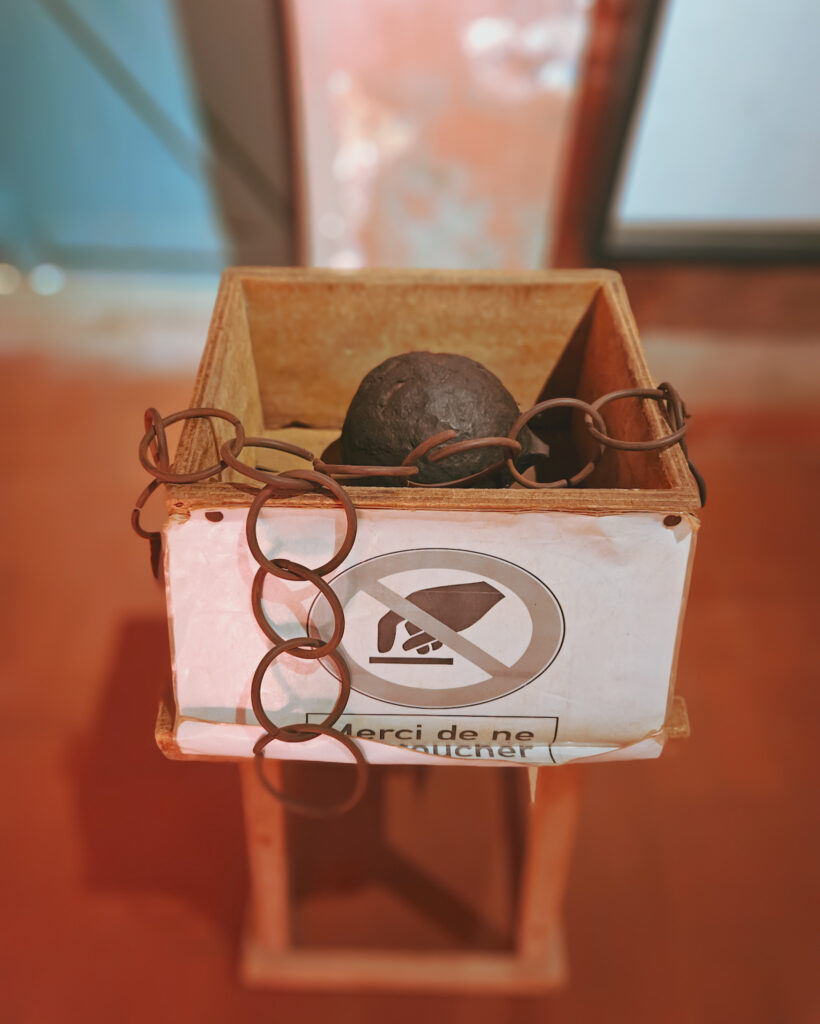
Enslaved Africans had to weigh a minimum of 60kg. If they couldn’t meet the 60kg weight, they would be put in cells for those deemed temporarily unfit and fed with beans and palm oil until they reached the required minimum weight. If they still didn’t meet the required weight of 60kg, they were sold for a cheaper price and work on the island.
Upstairs in the slave house was an apartment for the traders where they would party, drink wine, dance, etc., above the horrific acts that were happening downstairs.
Slavery took place on the island between 1576 to 1848 before being outlawed. More than 300 years.
Go early
It gets really busy here. I visited Gorée Island and The House of Slaves twice as the first visit was a group tour and felt hurried. I, therefore, didn’t get the time for reflection needed, especially given how personal this is for me. A private half day tour is recommended. Alternatively, explore Dakar and Gorée Island full day tour.
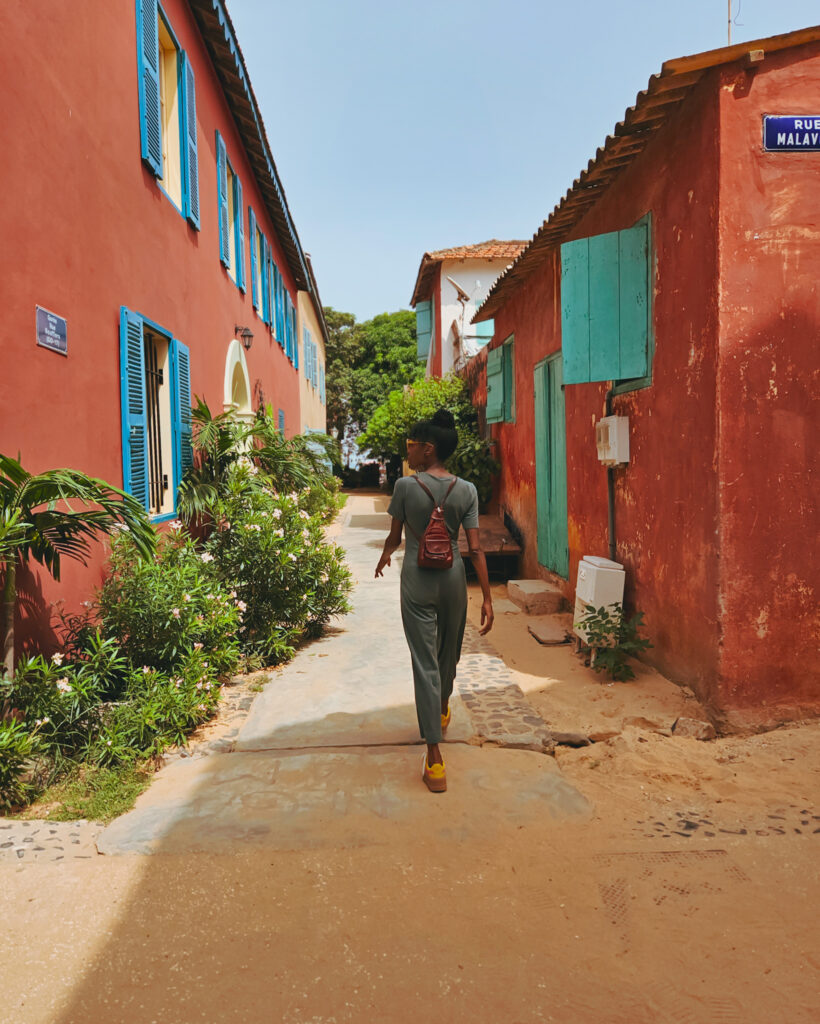
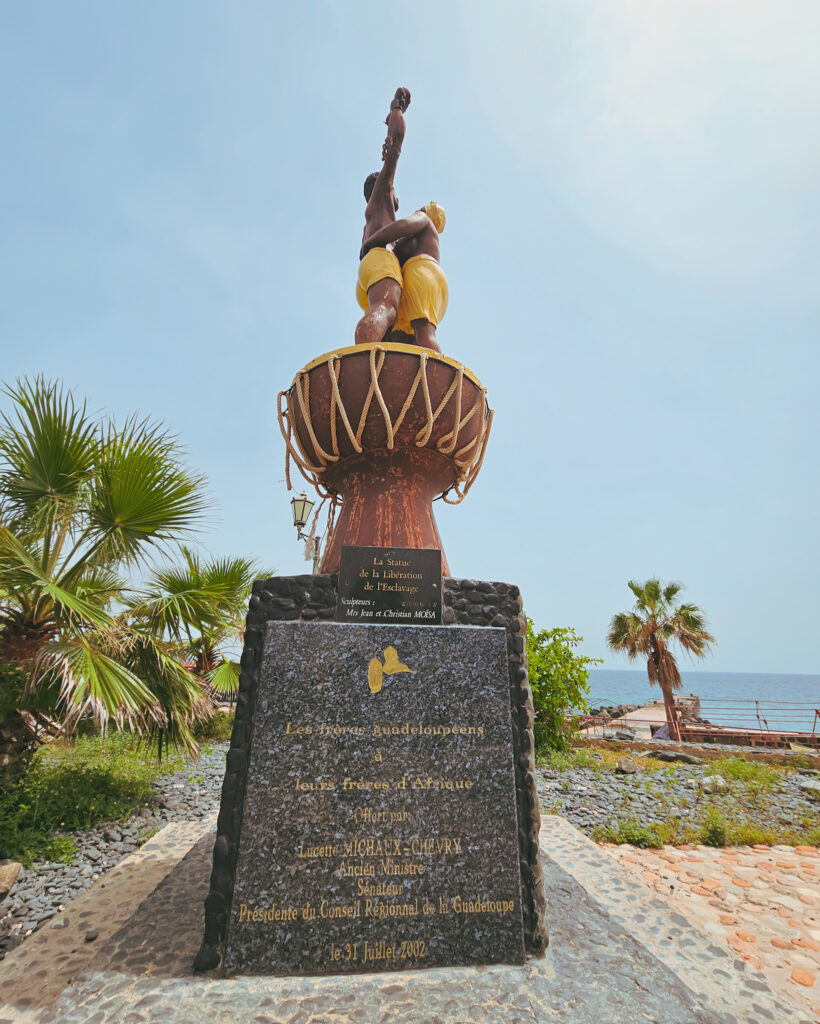
Other things to do on the island
People have always lived on Gorée Island, and there are businesses such as restaurants, shops, a museum, schools, doctors, etc. It is a beautiful, colourful island with a slower pace than nearby Dakar, and you can easily spend a day here after learning about the history, shopping, strolling around, eating and chilling on the beach. It is one of Senegal’s top tourist attractions, and there is a hard hustle by some locals selling their goods and wanting you to visit their shop on the island, which may start from the ferry.
You will need your passport for a visit to Gorée Island. Take the ferry from the harbour for 5000 francs return.
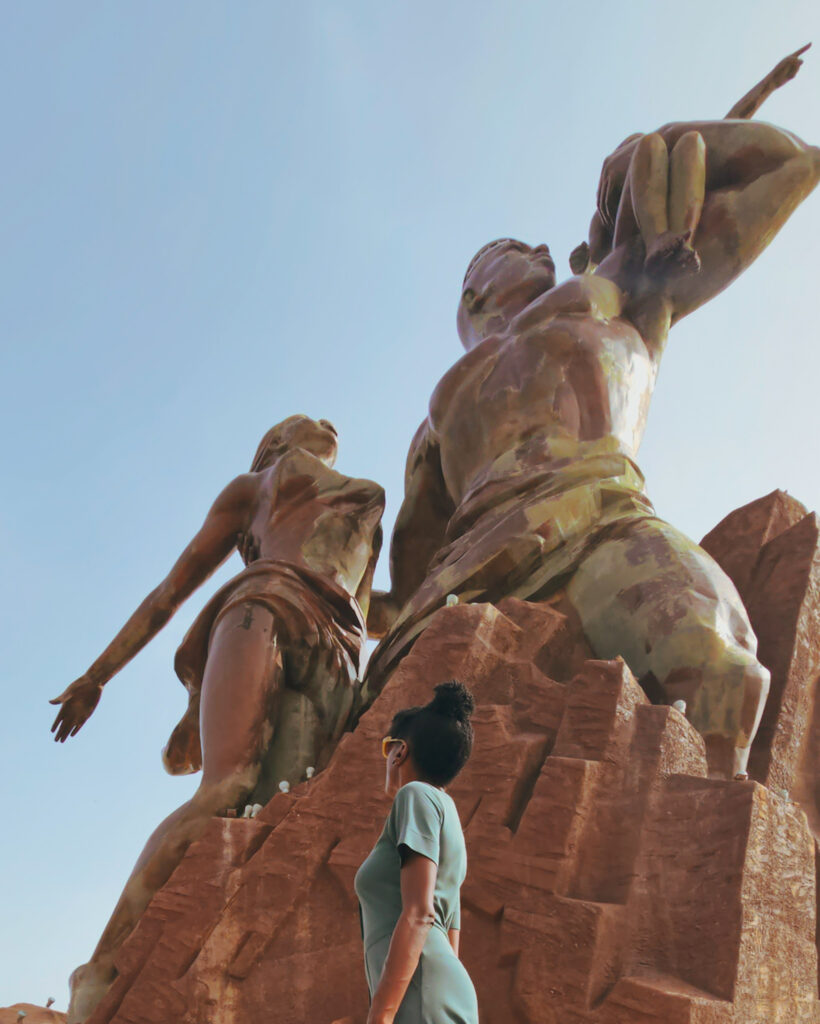
6. African Renaissance statue
This huge bronze statue sits on top of one of the twin hills known as Collines des Mamelles overlooking Dakar and the Altantic Ocean. It was unveiled in 2010 to commemorate Senegal’s 50 years of independence from France. The statue symbolises an African family coming from the land out of the darkness and reaching the light with all the generations.
The African Renaissance Monument is believed to be Africa’s tallest statue, standing at around 52 metres high. The man weighs approximately 100 tonnes, the child 30 tonnes, and the woman 70 tonnes – totalling 200 tonnes. The heads, hands and feet were lifted by a crane. You can go inside to the top for views of the city.
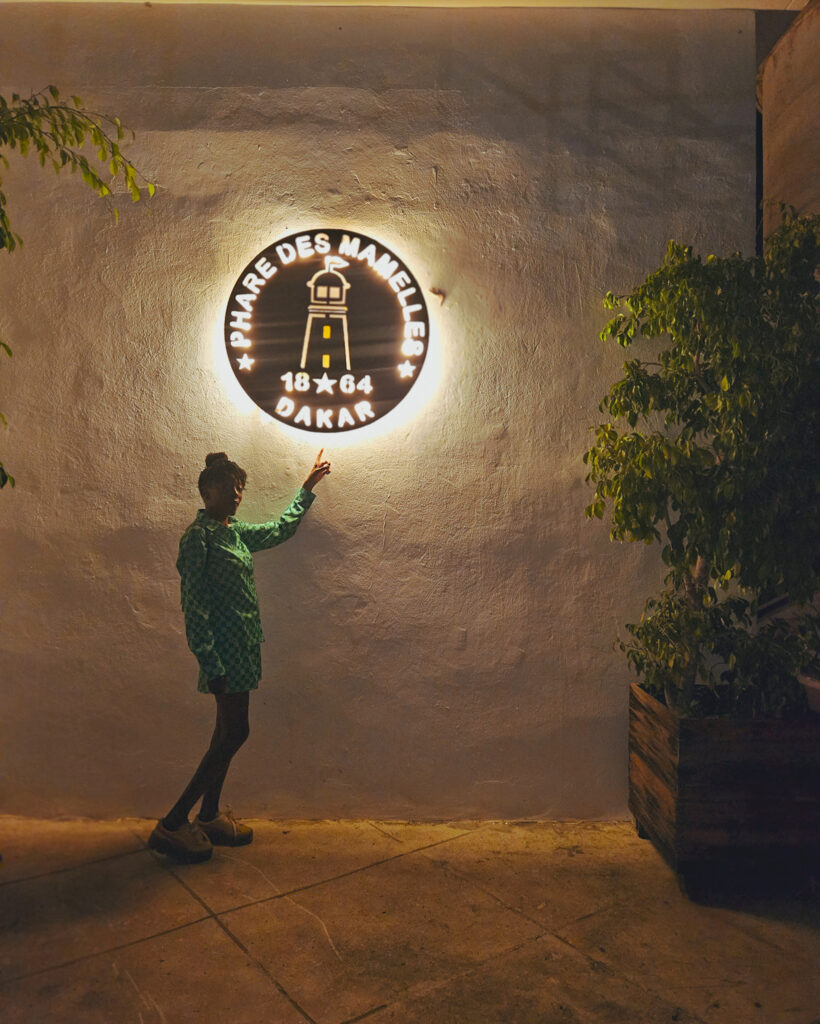
7. Phare des Mamelles
Phare des Mamelles is a rooftop restaurant and bar with great views of Dakar and good vibes.
The Mamelles lighthouse is located on one of the two hills of the same name overlooking Dakar and is a symbolic building. It was built in 1864 and sits on the highest point of Dakar and western Senegal.
During the day, the lighthouse is a museum and tourist attraction with a restaurant attached.
At night, there are DJs and live music in the restaurant/bar/nightclub. It’s classy but reasonably priced and well worth a visit when you’re in the city.
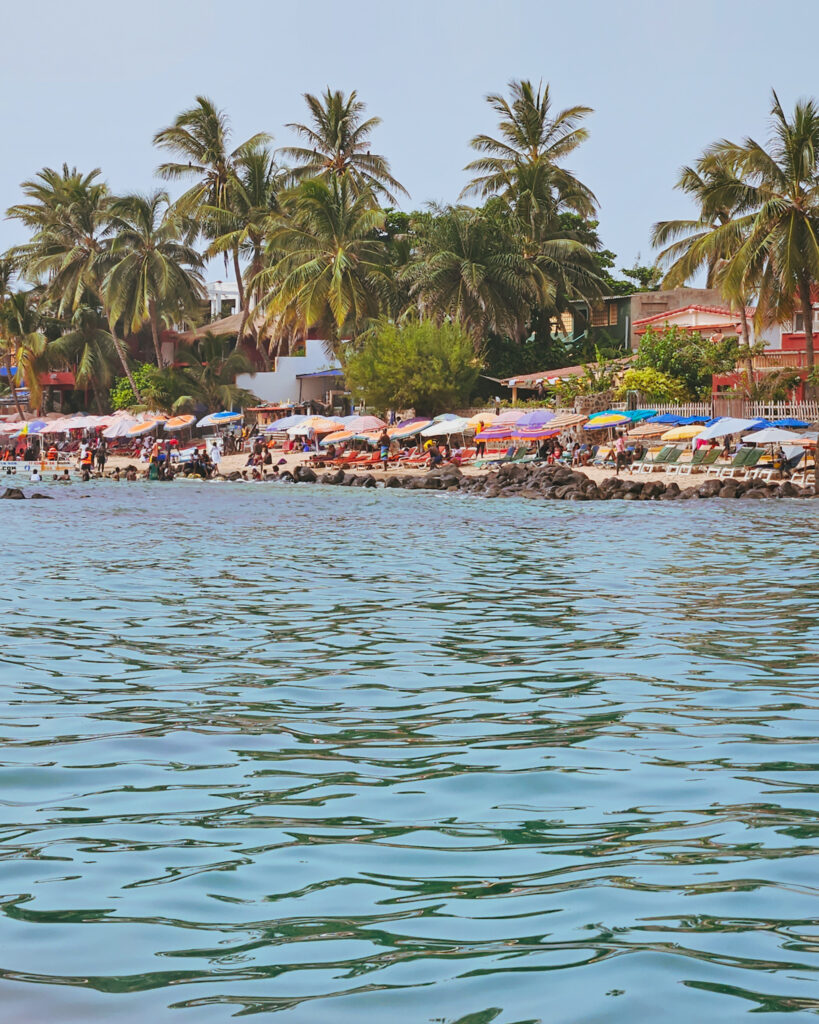
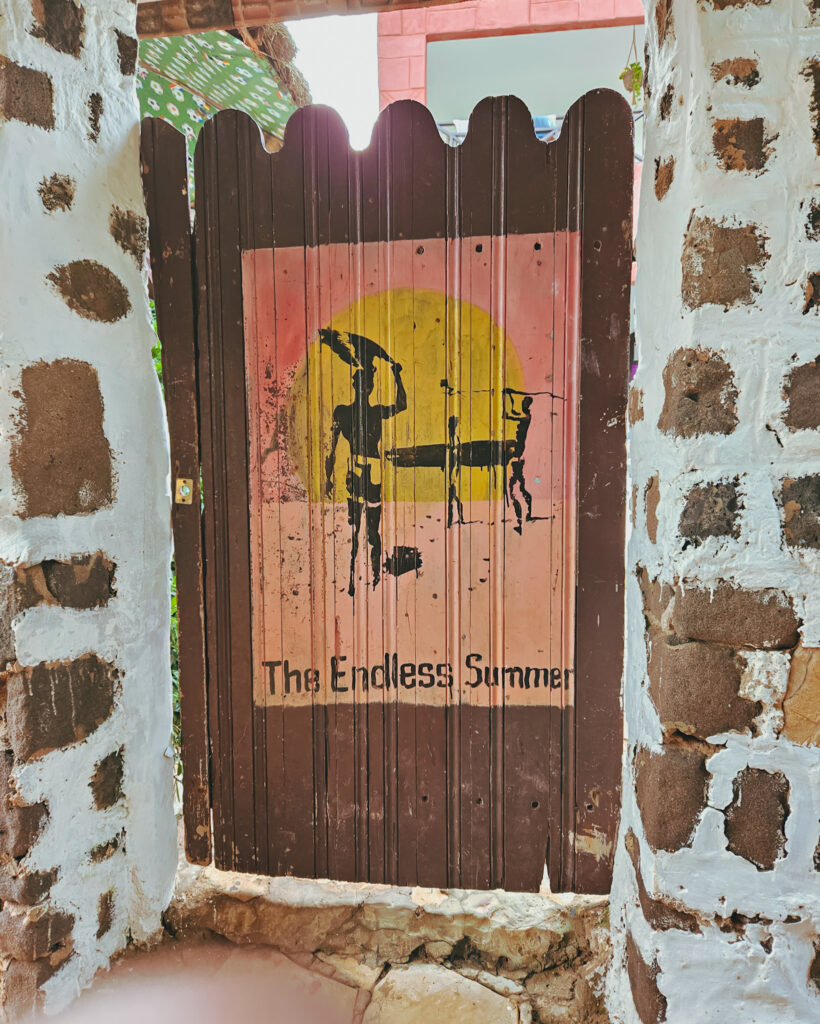

8. Ngor Island
Ngor Island’s location is off the coast of Ngor District in north Dakar. It can make an ideal destination to escape the noise and hustle of Dakar for a day or more.
The tiny island is a relaxing beach that is real-life Senegal and less tourist trodden than Gorée Island – a must for a feel of local beach life! A Senegalese friend took me here, and it has such a great vibe about it. Chill on the beach, eat fresh seafood and take a tour of the island through the narrow streets that wind between the villas.
Boats leave Ngor Beach frequently to reach Ngor Island. It cost 500CFA, I believe. I went with my Senegalese friend, and she paid, so I’m not sure. However, you can book a tour through Viator. It has a few calm beaches on the bay side, and is a surfer’s delight on the northern coastline.
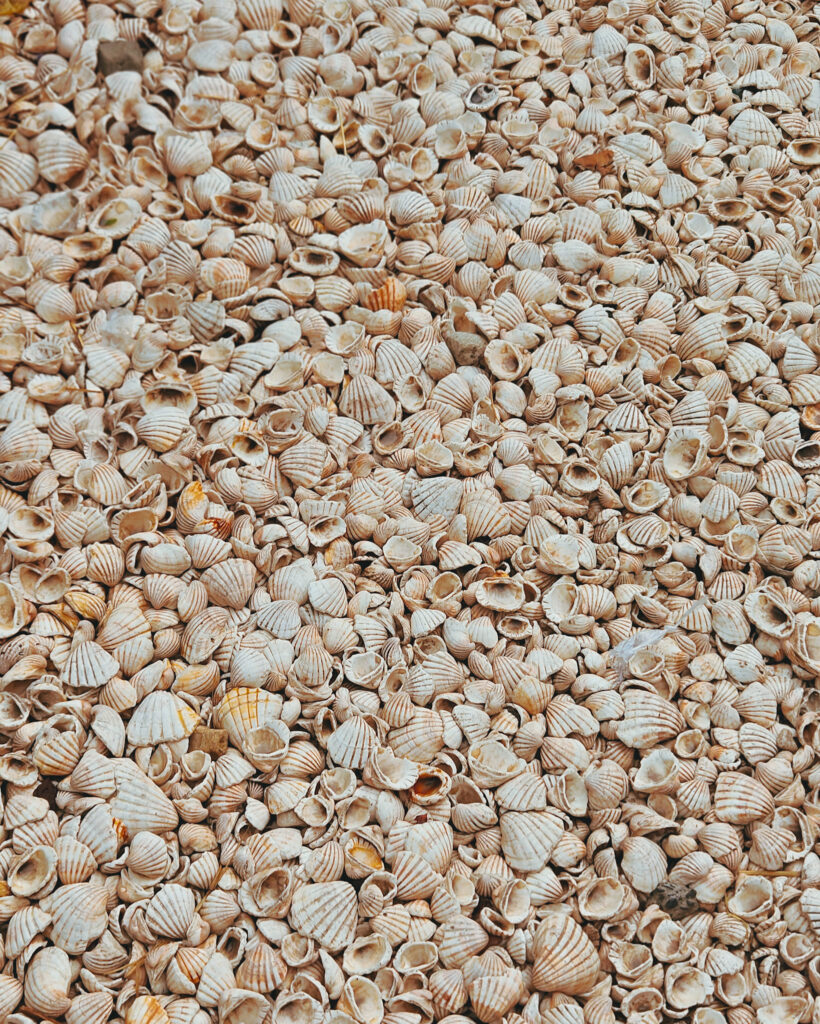
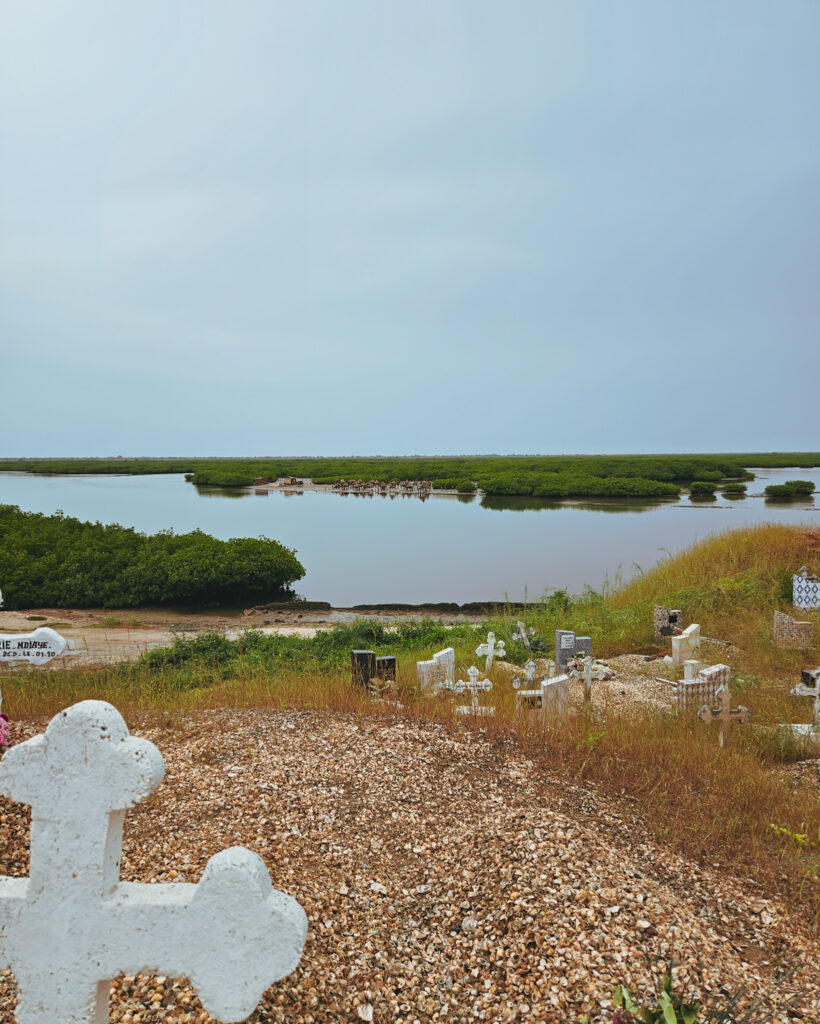
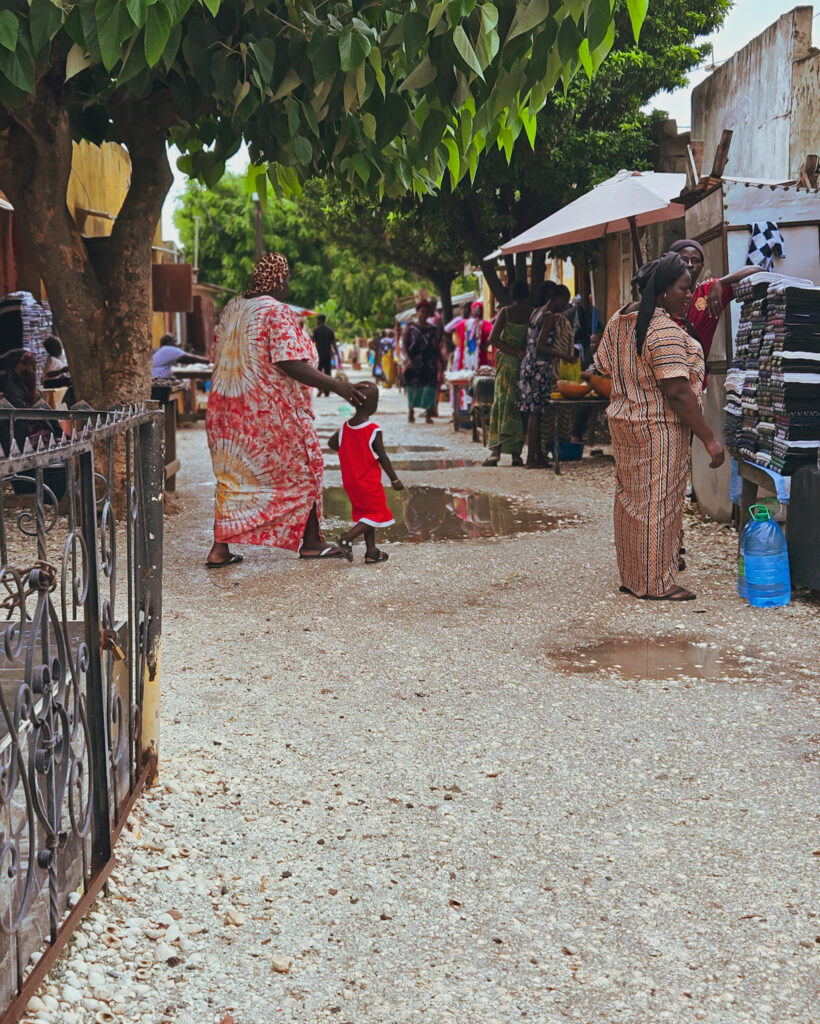
9. Fadiouth (Shell island)
Fadiouth, commonly known as “Shell Island”, is an island made of cockle, clam and oyster shells that accumulated over the years. The shells are the island’s foundation and are even incorporated into architecture.
Although this simple, sleepy island could easily be ignored, it is, in fact, very unique and not just for its shells. Interestingly, although around 90% of the population of Senegal is Muslim, the residents of Shell Island are mostly Christian but also have a significant Islamic population, with all residents living in a harmonic close-knit community.
Fadiouth is known mainly for its cemetery, which has also adapted to the island’s shell landscape. The cemetery is the only one in Senegal where religious divisions don’t exist. Here, Christians, Muslims and animists are buried.
It’s Senegal seen very differently from a unique perspective. But beware of images that may burn your eyes, such as white Jesus. You’ll also see pigs all of a sudden. They clearly don’t know their fate.
A guided tour is mandatory and helps the local community 1000CAF, a footbridge connecting it to mainland Senegal. I did this tour through my local taxi driver, but you can book through Viator.
10. Sacred Boabab
The baobab tree is sacred in Senegal and symbolizes longevity and knowledge. They are often central to the lives of villagers who ask the spirit of the tree for good fortune, health, or success. As the trees have status as sources of wisdom in the past, griots would be buried in their trunks.
The Sacred Boabab is the biggest baobab tree in Senegal. I’m not sure of the age. I was told around 750 years. It’s said that if you place your left hand on it and make a wish, you will get good fortune. I’m still waiting!
You can go inside the baobab tree, but there are a lot of bats in there. Don’t stand in the middle, as they will pee on you.
It’s worth a stop on your way to or from Fadiouth, but I wouldn’t go out of my way for this specifically unless you’re really into trees like that.
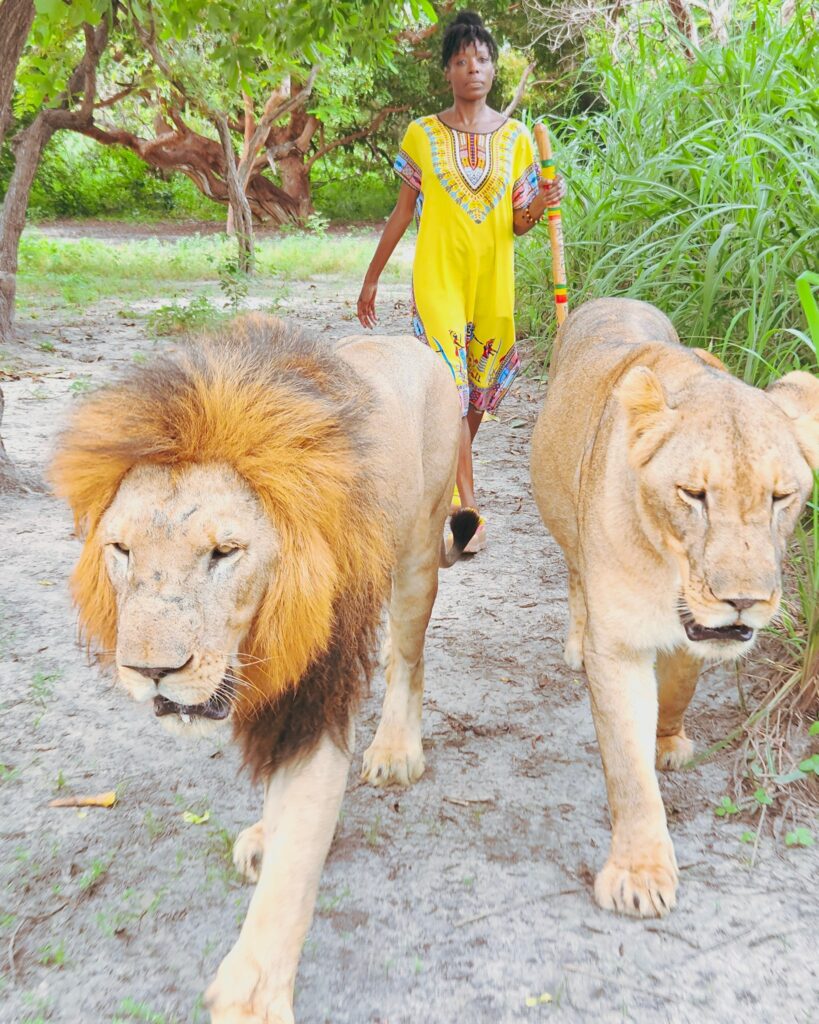
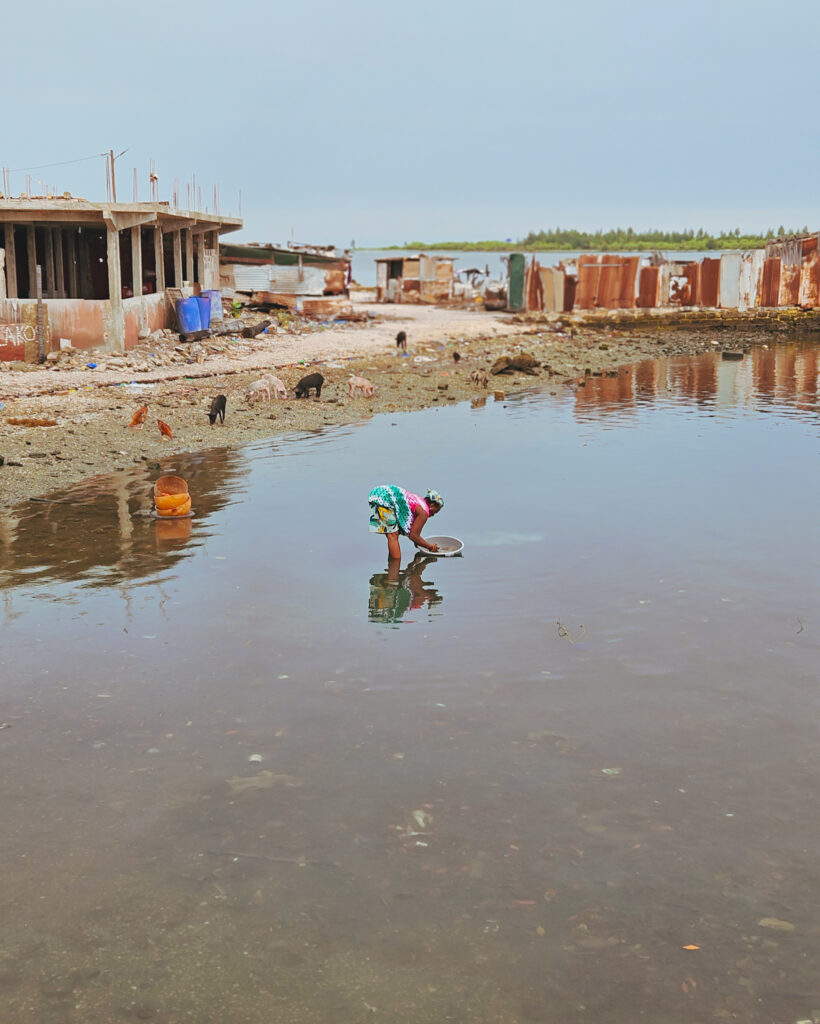
A bit of Wolof
Although French is the official language of Senegal, being introduced through colonisation, Wolof is most widely spoken and understood by at least 90% of the population.
French is spoken by roughly one-third of the population of Senegal, and I do advise knowing a little at least, as well as having Google Translate to hand.
The word Wolof (also spelt Jollof/Djolof) refers to the ancient kingdom that was a part of Senegal between the 12th and the 13th centuries.
It will be useful and appreciated to have a phrase or two to hand. However, as Wolof is predominantly an oral language and rarely written in official documents, spellings vary from place to place.
Thank you = Dieureudieuf
Hello = Nagadef
I’m fine = Magui fi
Wolof is used by over 5 million people in Senegal, the Gambia, and Mauritania.
National Dish
Thiéboudienne (pronounced CHE-boo JEN), sometimes called Poisson au Riz – a one-pot meal made with fish, vegetables, rice and a mixture of African spices and translates to the rice of fish in Wolof.
Thiéboudienne is one of West Africa’s most popular dishes and Senegal’s national dish. It’s also popular in the neighbouring countries of Mauritania, Guinea, Guinea Bissau and Mali.
Jollof rice is traditionally attributed to the Senegalese Wolof empire.
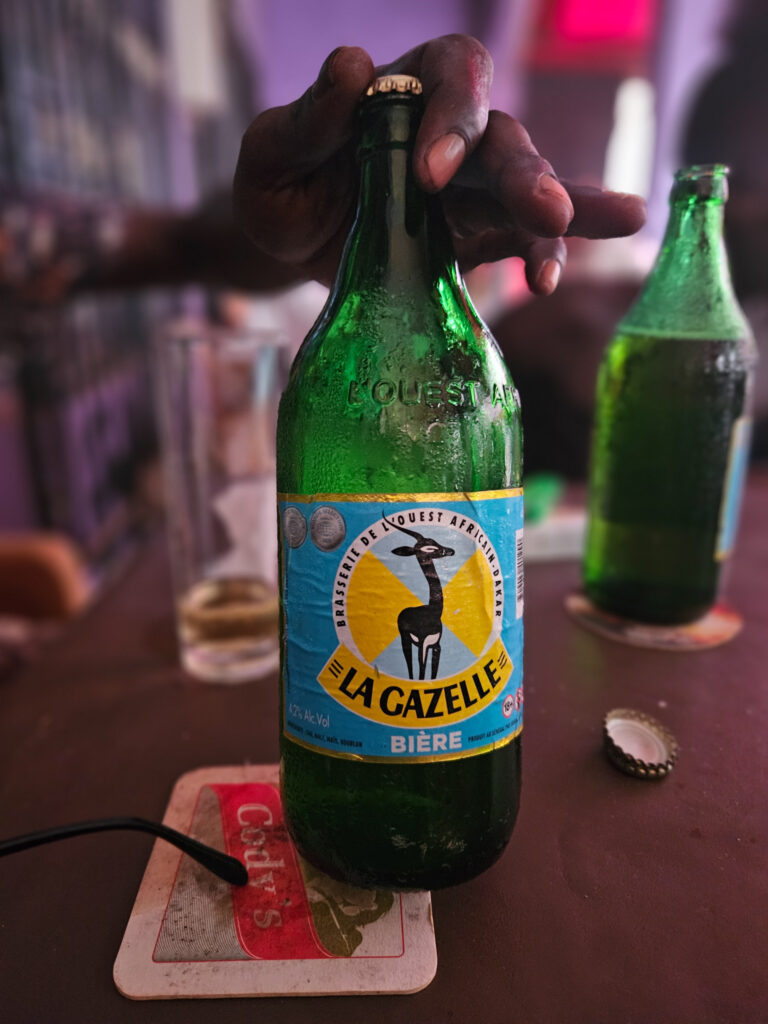
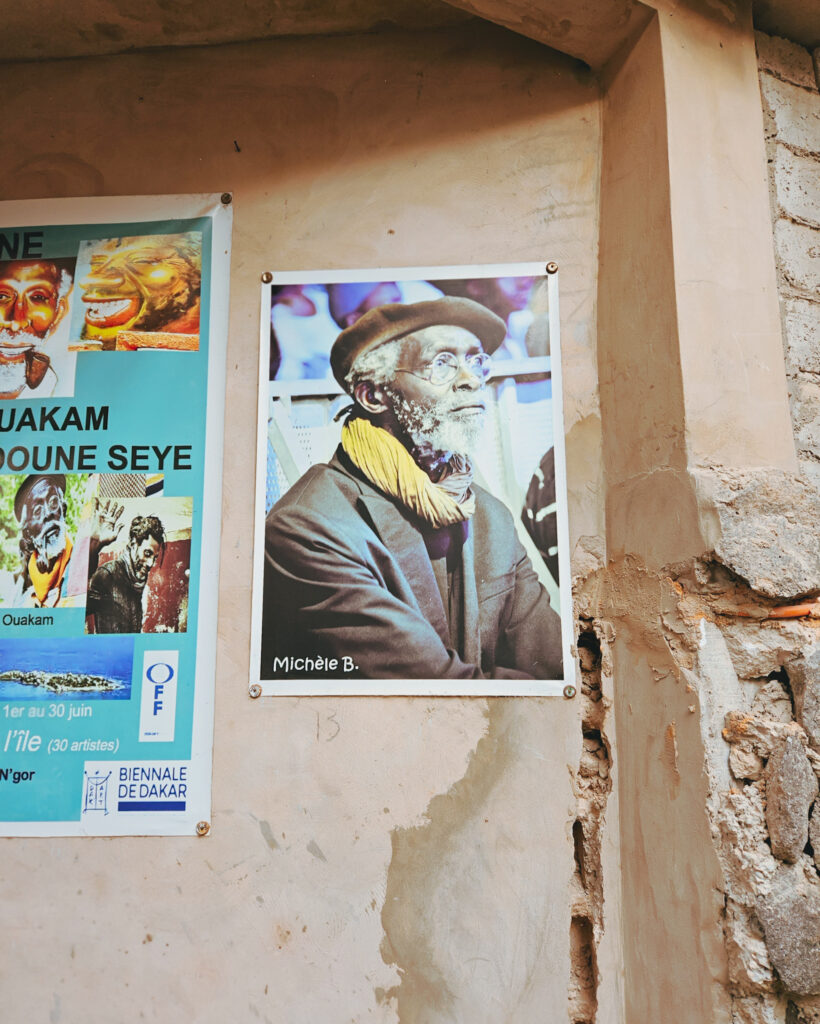
So, what did I think of Senegal?
Senegal is known as the country of Teranga, meaning hospitality, and they live up to this saying. Everyone was extremely helpful and went out of their way to assist me in my times of need as well as accommodating my lack of French.
When lost and asked for directions, I had someone walk me to my destination. When too early for the first ferry to Gorée Island, a member of staff went over and above to assist me and made sure I waited comfortably, even offering to get me breakfast. The hospitality was unrivalled, and the Senegalese are a truly heartful people.
It’s a place that, though it still has a notable amount of tourists, is not too touristy, not even in the touristy areas, if you get what I mean. It still feels distinctly African and not over-commercialised.
I also felt safe travelling as a solo female and never once felt intimidated or threatened. The only problem I had was due to my minimal French.
There is always an internal battle when deciding whether to return to a country. There’s so much more of the world yet to explore. However, I feel I needed more time in Senegal. There is still much to see, and I loved the place and the people so much that I would love to return. I know I say that about many places, but Senegal did something different to me. I would like to visit the Saloum Delta next time and also pop next door to The Gambia.
Where to now?
I wish it could be Africa trips most of the time, to be honest, as I want to explore more of the continent, but it is a costly trip.
When a friend asked me if I was back from Africa, I replied affirming, “Yes” he said, “You must feel so alive”. He’s right – Africa awakens something lying dormant. It is, after all, in the DNA.
After visiting Senegal, I want my trips to be more purposeful. Where do I go from here? I mean, Alicante just won’t cut it. I have been meaning for a long time to get an ancestry test done, and this trip after returning to the “Door of no Return” has intensified those feelings.
